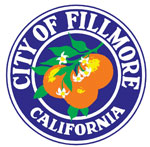|
By Anonymous — Wednesday, September 23rd, 2009
A Petition for Writ of Mandate, Injunction, and Declaratory Relief for violations of the Ralph M. Brown Act has been filed on behalf of the citizens of Fillmore by Petitioner Richard P. McKee, an individual. The petition alleges an e-mail sent to Councilman Steve Conaway by Mayor Patti Walker, August 25 of 2009, “revealed a Brown Act violation by a majority of the City Council through a serial meeting arranged and facilitated by Interim City Manager Larry Pennell.” At the regular council meeting, August 25, Mayor Walker announced that a closed session (not on the agenda) would be held concerning a Brown Act violation charged in an August 25, letter from Councilman Conaway to City Clerk, Clay Westling. The alleged violation concerned a serial meeting between three council members, which was arranged by Interim City Manager, Larry Pennell. Pennell sought, and obtained, concurrence of thought from a majority of the city council. In his letter Conaway stated that “As a council member, I expect that the City Manager will conduct business fairly, openly and with the highest ethics. Sadly, Mr. Pennell’s actions resulted in implicating three of my council members in this Brown Act violation.” Conaway continued: “As a result of the serial meeting, the trust installed upon Fillmore officials will b e diminished. When this issue came to my attention I urged Mayor Walker to CONTINUED » |
 Interim City Manager Larry Pennell could not answer Councilman Conaway’s question about why the agreed procedure for finding a new auditing company for the city was not followed. Pennell brought-in a new firm without giving other firms a chance to bid the job. There will be no savings for the city with this new ad-hoc agreement. In fact, while $34,000 was budgeted for the audit, under the new auditing firm the cost to the city will be almost $41,000. $7,000 could have been saved by keeping the previous firm which had done a commendable job for many years. Enlarge Photo By Carol Wilson — Wednesday, September 23rd, 2009
Mayor Patti Walker, two city council members Jamey Brooks and Mayor Pro-tem Gayle Washburn with Fillmore City Attorney Theodore Schneider, reviewed the council’s action resulting in the Brown Act violation debate in a closed-door session Tuesday night, September 22, 2009. |
|
By Anonymous — Wednesday, September 23rd, 2009
Nine teachers from Piru Elementary School, working with their former principal Richard Durborow, mailed a charter school petition this week to Fillmore Unified School District (FUSD) Superintendent Jeff Sweeney and Board Members beginning the process to obtain charter status for Piru Elementary School. Piru Charter School (PCS) plans to open their doors beginning in the 2010-2011 school year. The charter petition is a result of collaboration which began last spring during a District reorganization planning process, and which continued despite the efforts of the FUSD administration to halt it. Charter schools are public schools that are responsive to students’ needs and are held accountable for improved student achievement. They are open to the public, are tuitionfree, participate in state tests, employ credentialed teachers to teach core subjects, and can offer innovative curriculum and teaching strategies designed to improve student learning. For more information on charter schools, visit the website of the California Charter Schools Association at - myschool.org. Under current state law, and with the full support of Governor Schwarzenger and President Obama, public schools can be converted to charter status when the majority of the teaching staff file a charter petition addressing sixteen specific elements regarding school vision, CONTINUED » |
|
By Anonymous — Wednesday, September 23rd, 2009
Governor Arnold Schwarzenegger today proclaimed a state of emergency in Ventura County due to the Guiberson Fire that has burned over 6,000 acres, threatens hundreds of homes and other structures and has caused the mandatory evacuation of residents and opening of emergency shelters. The text of the proclamation is below: A PROCLAMATION OF A STATE OF EMERGENCY WHEREAS on September 22, 2009, the “Guiberson Fire” started in Ventura County and continues to burn; and WHEREAS the fire has already burned over 6,000 acres and is zero percent contained; and WHEREAS the fire threatens hundreds of homes and other structures, causing the mandatory evacuation of residents and opening of emergency shelters; and WHEREAS on September 22, 2009, I requested, and the Federal Emergency Management Agency granted, a Fire Management Assistance Grant for this fire; and WHEREAS on September 22, 2009, Ventura County declared a local emergency and requested that I declare a state of emergency; and WHEREAS the circumstances of this fire, by reason of its magnitude, are or are likely to be beyond the control of the services, personnel, equipment and facilities of any single county, city and county, or city and require the combined forces of a mutual aid region or regions to combat; and WHEREAS under the provisions of section 8558(b) of the California Government Code, I find that conditions of extreme peril to the safety of persons and property exist due to the fire in Ventura County. NOW, THEREFORE, I, ARNOLD SCHWARZENEGGER, Governor of the State of California, in accordance with the authority vested in me by the state Constitution and statutes, including the California Emergency Services Act, and in particular, section 8625 of the California Government Code, HEREBY PROCLAIM A STATE OF EMERGENCY to exist within Ventura County. IT IS HEREBY ORDERED that all agencies of the state government utilize and employ state personnel, equipment and facilities for the performance of any and all activities consistent with the direction of my California Emergency Management Agency and the State Emergency Plan, and that the California Emergency Management Agency provide local government assistance under the authority of the California Disaster Assistance Act. I FURTHER DIRECT that as soon as hereafter possible, this proclamation be filed in the Office of the Secretary of State and that widespread publicity and notice be given of this proclamation. IN WITNESS WHEREOF I have hereunto set my hand and caused the Great Seal of the State of California to be affixed this 22nd day of September 2009. ______________________________________ ARNOLD SCHWARZENEGGER Governor of California ATTEST: _______________________________________ DEBRA BOWEN Secretary of State |
|
By Anonymous — Friday, September 18th, 2009
 Friday, September 11 County fire department units were called to suppress a grass fire on east Guiberson Road. At least 11 units responded and the fire was extinguished that same day. The cause of the fire is under investigation. Enlarge Photo |
 Above community members and parents come together for banners to be hung on Central Avenue, Wednesday Sept. 9th. Enlarge Photo By Dick Diaz — Wednesday, September 16th, 2009
What a great tribute the “Military Banners Program” has become to the men and women of Fillmore currently serving in the military. The immensely popular Banners have now been placed on Central and Sespe Avenues and the available spaces have rapidly been filling with new Banners almost monthly. I, for one, almost daily go to town and rarely do I not take a trip by my son's Banner to acknowledge his service. I know of a few other parents and family that do the same with their loved ones Banner. I also make it a point to acknowledge the others as I travel past theirs and note that some of the young men and women have had Banners placed by their family, but have not had an article written about their service. Some of them I know and others I don't. I curiously wonder about what they do within their respective branches of the military, who their family are and maybe I wonder a little about this brave person who chose to serve all of us. If for some reason the family of those American Heroes and Fillmore/Piru son's and daughters felt it is to late to have an article put in the Fillmore Gazette, it isn't and I would be proud to gather the information and photograph and share their story with the rest of the community. My contact information runs weekly in the Fillmore Gazette. On Wednesday, September 9, 2009 at 10:00 a.m. five more banners were installed on Central Avenue as part of the “Military Banner Program” which now totals thirty-seven installed Banners. A small, but enthusiastic and proud group of family and friends watched as CONTINUED » |
|
By Wanda Castel de Oro — Wednesday, September 16th, 2009
On August 31, 2009 Californians Aware, a non-profit political watchdog organization, sent a Demands for Cure or Correction to the City of Fillmore regarding a possible Brown Act violation. And according to Richard McKee, President of Californians Aware, with the presentation of the letter “…the clock will start ticking,” alluding to a possible “Brown Act lawsuit.” The Demands stems from the August 25, 2009 Fillmore City Council meeting in which the council held an “emergency closed session” regarding an alleged violation of the Brown Act due to “spoke and hub” meetings, as reported in the Gazette’s August 27th edition. The controversial session was held in response to a letter submitted by Councilman Steve Conaway to Fillmore City Clerk Clay Westling on August 25, 2009. The letter stated that he became aware, via email sent to him from Mayor Patti Walker, that a [different] Brown Act violation occurred involving three of his fellow CONTINUED » |
|
By Dick Diaz — Wednesday, September 16th, 2009
Fillmore resident and 2007 Fillmore High School graduate, United States Marine Corps (USMC) Lance Corporal (L/CPL) Andrew Lochelt, 19 years old, has arrived in Okinawa, Japan at Camp Foster. Camp Foster will be his new duty station for next couple of years. L/CPL Andrew Lochelt grew up in Fillmore and attended San Cayetano and Sespe Elementary Schools, Fillmore Middle School, Fillmore High School (FHS) and Ventura College prior to entering the USMC in July 2008 for a four-year tour of duty. L/CPL Andrew Lochelt was very active within the Fillmore Community while growing up; he played Fillmore “T” Ball, Fillmore Little League Baseball, Raiders' Youth Football and was on the Fillmore Swim Team. He also played the trumpet for the Fillmore Middle School and Fillmore High School Band. His skill with the CONTINUED » |
 Most of those attending Tuesday night’s school board meeting wore black in protest of the recent decision to reassign Evalene Townend to a newly created position. Townend is dealing with credible allegations of serious misconduct relating to communications with a teacher’s union official. Enlarge Photo By Carol Wilson — Wednesday, September 16th, 2009
Almost all seats were filled at Tuesday nights’ meeting of the Fillmore Unified School District board, as a retired teacher addressed the controversy regarding the reassignment of Evalene Townsend. Townsend was Assistant Superintendent of Human resources, and was recently reassigned to the position of Director of Student Support Services and Special Projects. In an email sent to the Fillmore Gazette, dated September 9, 2009, Superintendent Jeff Sweeney said Townsend had requested a reassignment due to personal reasons. Mary Ford, who retired as a teacher in the district in 2003, read a list of questions to the board concerning the new position that was created in light of budget cuts. “I am concerned how this will affect the employees and the community,” said Ford. She pointed out the large number of people in the audience who chose to wear black to show their solidarity in opposing the decision to appoint Townsend to the new position. “We are doing this to mourn the death of integrity,” Ford added. Some district employees, unhappy over how the Townsend issue was handled by the board, said they were fearful of speaking up in public over concern of reprisals. For more information regarding this issue see: District Awards San Caytano principal, Jan Marhorlin introduced two nominees for the team award. Because of their dedication to the school and student improvement Inger Overton and CONTINUED » |















